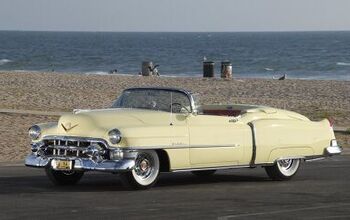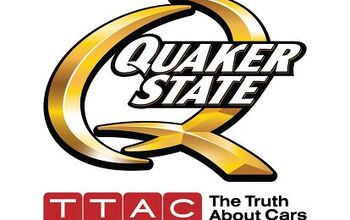NHTSA: Never Mind Throttle-Gate

So far, it had only been the usual people “familiar with the findings” that whispered to the WSJ that the NHTSA has found bupkis in their search for the ghosts in Toyota’s machines, and that there is growing suspicion of the NHTSA that it could have been the wrong foot on the wrong pedal again.
Now, the Financial Times writes for the first time that “US government officials have acknowledged that they have so far found no fault with the carmaker’s electronic throttle controls. They have suggested that many complaints of unintended acceleration that have dogged Toyota stem from driver error rather than defective equipment.”
Daniel Smith, an associate administrator at the National Highway Traffic Safety Administration, addressed a meeting organized by an independent committee set up by the National Research Council to probe the causes of unintended acceleration. In the meeting, Smith said that “despite several investigations of Toyota’s electronic throttle control system, NHTSA has not been able to find a defect.”
Richard Boyd, acting director of NHTSA’s office of defects investigation, told the NRC meeting that most sudden acceleration incidents investigated over the past three decades “probably involve the driver unintentionally pressing the accelerator when braking was intended.”
According to the FT, Toyota has not received details of NHTSA’s test findings. But Toyota says their own tests point to a variety of causes, including “pedal misapplication” and other driver errors.
To me, this is Audi all over again. I worked as a consultant for Volkswagen, and was very close to the proceedings. There is one difference. During the Audi scandal, is was mainly the hysterical media, led by CBS 60 Minutes in November 1986, that kept the flames on high. The NHTSA had acted professional, with restraint. After careful analysis, NHTSA much later concluded that the majority of unintended acceleration cases were caused by driver error such as confusion of pedals. The findings came 2 ½ years after the 60 Minutes program. In January 1989, the Canadian government issued a report attributing sudden acceleration to “driver error.” Two months later, a NHTSA report blamed “pedal misapplication.”
This time, it’s different. This time, the government has two car manufacturers and a big a conflict of interest. This time, it was the NHTSA and Transportation Secretary LaHood who fanned the flames and politicized the matter. It was the NHTSA that used their faulty database to spread horror stories about vehicular mass murder. This may also explain the rather rapid speed with which the NHTSA seems to suddenly distance itself from the matter. With Audi, it took years. This time, it’s months. It’s a classic case of hit and run.

Bertel Schmitt comes back to journalism after taking a 35 year break in advertising and marketing. He ran and owned advertising agencies in Duesseldorf, Germany, and New York City. Volkswagen A.G. was Bertel's most important corporate account. Schmitt's advertising and marketing career touched many corners of the industry with a special focus on automotive products and services. Since 2004, he lives in Japan and China with his wife <a href="http://www.tomokoandbertel.com"> Tomoko </a>. Bertel Schmitt is a founding board member of the <a href="http://www.offshoresuperseries.com"> Offshore Super Series </a>, an American offshore powerboat racing organization. He is co-owner of the racing team Typhoon.
More by Bertel Schmitt
Latest Car Reviews
Read moreLatest Product Reviews
Read moreRecent Comments
- Jeff I have had about 6 recalls on my 2022 Maverick hybrid with most of them needing program updates other than that I really like my Maverick.
- Daniel J One thing to note: just because it's 240v doesn't mean the circuit can handle the load. How if a breaker trips and something important is on that breaker (lighting, sump pump... whatever). How if all the 240 receptacles are on the same circuit and two people charge at the same time?
- Redapple2 A slight twist of the topic. > A good reason to buy a car before they do a redesign (beyond teething problem for the newborns). Getting a car with the old tech. IE- vanishing Carplay. New subscription requirements. And doing away with switches and knobs and substituting a huge TV screen. I got a 2024 Forester because the 2025 moves everything to the new huge TV screen. A/C settings. Seat heat. All wheel drive modes etc. All in the TV screen. Some of it buried on page 3 of a submenu. No. Hard no. I m not participating in this.
- Lou_BC 2022 Colorado ZR2 diesel:1st year:I got a "low oil" warning the first few months of ownership. Dealer checked oil consumption every month for 6 months. No oil consumption. Probably incorrectly filled at factory and missed with PDI. AC did not work. Noticed that 2 weeks later during a hot spell. Local dealership lazy and just recharged system. They assumed GM factory screwed up. It leaked out and wasn't working after winter. Tech did a leak test and found problem. Sold without module that runs heated seats (chip shortage). I got a $50 refund and when parts showed up they inserted module. Repaired right before winter. DEF heater too weak to keep up with extended cold weather. ECU did threaten "limp mode". Dealer claims everything was working as designed. Multiple small dents in rear wheel wells close to plastic fender flares. Rock damage from driving on gravel roads. Factory wheel well liners are sh!t. GM spray in liner does not cover entire tailgate. Cheap bastards. 2nd year:DEF system froze up again. Service adviser said they sell more trucks in California than Canada. Get a heated garage. Rear brakes. Left rotor and pads fried at 50,000 km. Right side not quite to metal. I was told this was normal for Chevy trucks used offroad. Lost a rear shock guard. Poor design. Cheap. Diff vent line dislodged. Wheel design pretty but prone to rock chips and rock damage. Dented a rock slider on a big rock. Often find little pebbles in between plastic flares and metal fenders. Rear bumper seams also collect pebbles. Duratrac's are a decent all around tire but are too soft for extended time on gravel roads. Chewed up and very little tread at 60,000 km. Lost 1 tire to sidewall puncture. It definitely isn't as well built as my previous trucks. I seriously doubt I'd buy another Chevy. I like the truck overall. Love the diesel drivetrain.
- HotPotato Honestly VW should have bought Canoo too -- the Canoo is a much better rendition of a modern VW van than the actual VW EV van, which is just a standard generic Euro delivery van disguised by a vintage 2-tone paint job.

































Comments
Join the conversation
Murphy's Law: Anything that can go wrong, will go wrong. wsn's Law: Any politician that has the opportunity to play dirty, will play dirty. The attack on Toyota is definitely politically motivated. It's just executed so poorly that it doesn't look the part.
Surely it's not hard to believe that these government morons were either disingenuous or too damn stupid to properly investigate anything. And all the while their bail out babies benefitted. How cozy. So where does Toyota go to get their reputation back?